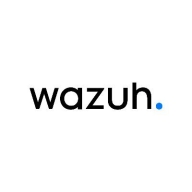

Cortex XDR and Wazuh compete in the security software category, addressing diverse cybersecurity needs in the market. While Cortex XDR seems to have the upper hand due to its advanced threat detection capabilities, Wazuh offers a more cost-effective approach suitable for budget-conscious environments.
Features: Cortex XDR by Palo Alto Networks manages zero-day malware effectively through behavior-based detection, enhancing security integration with other Palo Alto products. Wazuh stands out for its open-source nature, enabling integration with various environments, robust SIEM capabilities, and compliance monitoring features.
Room for Improvement: Cortex XDR could enhance configuration simplicity and integration with third-party systems, and address false positives and dashboard flexibility. Wazuh faces challenges related to scalability and real-time monitoring in Unix systems, with a need for AI enhancements to improve threat detection and automated alert management.
Ease of Deployment and Customer Service: Cortex XDR offers flexibility in cloud and hybrid deployments with comprehensive customer service, though users report issues with support efficiency. Wazuh, being open-source, primarily supports on-premises deployment but lacks streamlined support, often requiring community assistance.
Pricing and ROI: Cortex XDR has a higher price point reflecting its extensive features, offering solid ROI by reducing security incidents. Wazuh, being open-source, has minimal initial costs which appeal to budget-constrained organizations, though users must consider additional expenses for support and infrastructure.
They appreciate the rich telemetry data from the solution, as it provides in-depth threat identification.
Cortex XDR by Palo Alto Networks helps to reduce my total cost of ownership significantly.
I have seen a return on investment with Cortex XDR by Palo Alto Networks, as this product is offered at a minimal cost, and we can find a good ROI from it.
I have seen value in security cost savings with Wazuh, as using proprietary EDR versions could save us substantial money.
The technical support from Palo Alto deserves a mark of ten because they reach out within an hour whenever assistance is needed.
There is no back and forth, and they know what we are asking for and come up with the best resolution for a solution.
If any of these services are missed, it becomes a problem in terms of support tickets, follow-up, or special configuration that needs to be done in the system.
They responded quickly, which was crucial as I was on a time constraint.
We use the open-source version of Wazuh, which does not provide paid support.
The documentation is good and provides clear instructions, though it's targeted at those with technical backgrounds.
Cortex XDR by Palo Alto Networks can be expanded anytime by purchasing another license without any issues related to scalability.
It can accommodate thousands of endpoints on one instance, and multiple instances can run for different clients.
Currently, I don't see any limitations in terms of scalability as Wazuh can still connect many endpoints.
Scalability depends on the configuration and the infrastructure resources like compute and memory we allocate.
Cortex remains fast and responsive, even with increasing data and alerts.
The thresholds we've seen on our firewall boxes at some instances reached 80% to 85%, but even at that level of utilization, we don't observe any latency or any issues reported with respect to accessing the application.
Cortex XDR is stable, offering high quality and reliable performance.
The stability of Wazuh is strong, with no issues stemming from the solution itself.
The stability of Wazuh is largely dependent on maintenance.
The indexer frequently times out, requiring system restarts.
Improving reporting and dashboard customization, along with the addition of real-time and exportable reports, would help SOC teams greatly.
The inclusion of this feature would allow the application of DLP policies alongside antivirus policies via a single agent and console, making it more competitive as other OEMs often offer DLP solutions as part of their antivirus products.
If the per GB data could be provided at a certain level free of cost or at the same cost which the customer is taking for the entire bundle, that would be better.
Machine learning is needed along with understanding user behavior and behavioral patterns.
The integration modules are insufficiently developed, necessitating the creation of custom integration solutions using tools like Logstash and PubSub.
I think Wazuh should improve by introducing AI functionalities, as it would be beneficial to see AI incorporated in the threat hunting and detection functionalities.
The pricing on SentinelOne is far more reasonable and cheaper than Cortex XDR by Palo Alto Networks.
I would say it is definitely not a cheap product, considering how mature it is and how scalable all Palo Alto products are together.
Cortex XDR is perceived as expensive by some customers, yet offers dynamic pricing.
Wazuh is completely free of charge.
I would definitely recommend Wazuh, especially considering Fortinet's licensing model which is confusing and overpriced in my opinion.
Totaling around two lakh Indian rupees per month.
It incorporates AI for normal behavior detection, distinguishing unusual operations.
The product provides automation responses in case of a threat attack, severity assessments, centralized manageability, and comprehensive compliance features, resulting in reduced costs.
It includes machine learning to easily analyze data and detect complex threats across endpoints, networks, or clouds.
Wazuh is a SIEM tool that is highly customizable and versatile.
The system allows us to monitor endpoints effectively and collect security data that can be utilized across other platforms such as SOAR.
With this open source tool, organizations can establish their own customized setup.
| Product | Market Share (%) |
|---|---|
| Wazuh | 7.9% |
| Cortex XDR by Palo Alto Networks | 4.8% |
| Other | 87.3% |

| Company Size | Count |
|---|---|
| Small Business | 43 |
| Midsize Enterprise | 20 |
| Large Enterprise | 43 |
| Company Size | Count |
|---|---|
| Small Business | 27 |
| Midsize Enterprise | 15 |
| Large Enterprise | 8 |
Cortex XDR by Palo Alto Networks delivers comprehensive endpoint security, integrating well with other systems to offer robust threat detection and real-time protection through AI-driven analytics.
Cortex XDR by Palo Alto Networks offers advanced endpoint protection and threat detection through AI and behavior-based analytics. Its user-friendly design simplifies integration with firewalls, delivering multi-layered protection with low resource consumption. Valued for policy management, USB control, and incident correlation, Cortex XDR enhances threat management and real-time threat hunting capabilities. However, users note challenges with third-party integration, reporting, and dashboard automation. Agent performance across operating systems and memory consumption are areas for improvement, alongside reducing false positives and simplifying endpoint management and setup.
What features does Cortex XDR offer?
What benefits should be considered in reviews?
Cortex XDR is crucial in industries requiring robust endpoint protection, such as finance, healthcare, and technology. It supports malware detection, behavioral analysis, and ransomware mitigation across endpoints, including remote work environments, providing comprehensive threat visibility and security policy management. The solution's integration with firewalls and specialized industry requirements enhances security posture in diverse operational settings.
Wazuh offers an open-source platform designed for seamless integration into diverse environments, making it ideal for enhancing security infrastructure. Its features include log monitoring, compliance support, and real-time threat detection, providing effective cybersecurity management.
Wazuh stands out for its ability to integrate easily with Kubernetes, cloud-native infrastructures, and various SIEM platforms like ELK. It features robust MITRE ATT&CK correlation, comprehensive log monitoring capabilities, and detailed reporting dashboards. Users benefit from its file integrity monitoring and endpoint detection and response (EDR) capabilities, which streamline compliance and vulnerability assessments. While appreciated for its customization and easy deployment, room for improvement exists in scalability, particularly in the free version, and in areas such as threat intelligence integration, cloud integration, and container security. The platform is acknowledged for its strong documentation and technical support.
What are the key features of Wazuh?In industries like finance, healthcare, and technology, Wazuh is utilized for its capabilities in log aggregation, threat detection, and vulnerability management. Companies often implement its features to ensure compliance with stringent regulations and to enhance security practices across cloud environments. By leveraging its integration capabilities, organizations can achieve unified security management, ensuring comprehensive protection of their digital assets.
We monitor all Extended Detection and Response (XDR) reviews to prevent fraudulent reviews and keep review quality high. We do not post reviews by company employees or direct competitors. We validate each review for authenticity via cross-reference with LinkedIn, and personal follow-up with the reviewer when necessary.